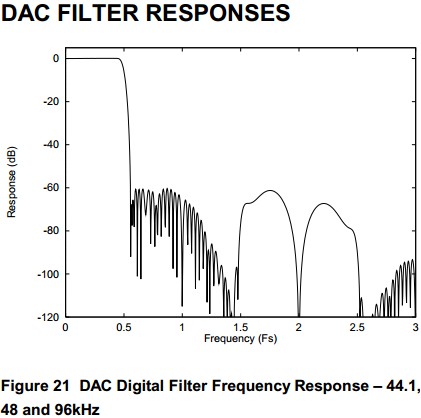Supposing that the info is right, that the Sound Blaster Audigy SE uses the WM8768, looking at page 34, there is nothing there that represents the card's output frequency response. (that is, unless it's really doing de-emphasis filtering for material it's not supposed to be doing that for) By the way, for those that answer questions without reading links, the 44.1 kHz quoted was the sampling rate listed in some figure labels, not an axis marker on the graph.
If anything, so long as there's nothing external to the chip that would alter the FR, you're probably more looking for page 33, where it shows the DAC filter response. It's plotted in terms of Fs, the sampling frequency (44.1 kHz for CD audio, so 0.5 Fs would be 22050 Hz).
As mentioned a lot previously, most of these sound cards should be pretty flat across the audio band, just maybe with slightly different rolloffs near 22 kHz.
If you are using headphones directly from the sound card, there can be some frequency response variations as a result of interactions between the headphones impedance and sound card output impedance, as mentioned above. What headphones are you using? It could be that another device has an undersized DC blocking capacitor on the output and thus rolls off the bass when you use lower-impedance headphones, for example.
There are a number of ways to measure the frequency response output of the card. You can use some software like the free version of RMAA to do the test signals and math for you. Just run a 3.5mm cable from the sound card output back to the input. That tests the overall response of the D/A and A/D combined, whereas maybe you're only interested in just the D/A, but that should be sufficient to confirm that there is no big bass boost active. You can use a splitter and connect the output to both headphones as well as the input, if you want to the how the FR is affected when running headphones. This kind of testing is limited in accuracy by a few factors, but for just getting a general idea of the FR it should be good enough.
It should also be noted that if you are comparing the sound output of two devices and one is louder than another, the difference in loudness will also impact the perceived level of bass relative to other frequencies.





